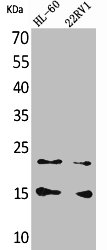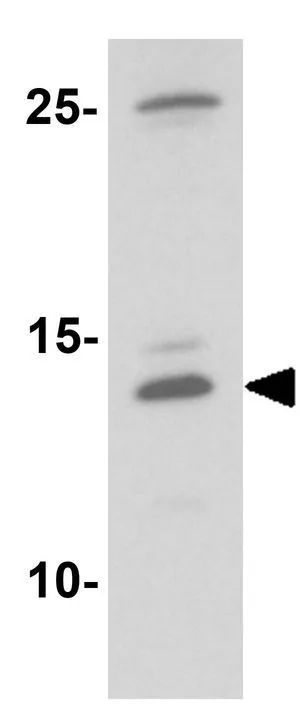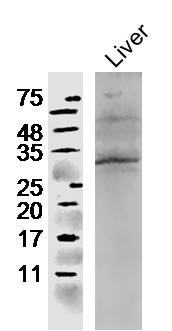MIP1 beta antibody
GTX10383
ApplicationsWestern Blot, ELISA, ImmunoHistoChemistry, ImmunoHistoChemistry Frozen, Neutralisation/Blocking
Product group Antibodies
TargetCCL4
Overview
- SupplierGeneTex
- Product NameMIP1 beta antibody
- Delivery Days Customer9
- ApplicationsWestern Blot, ELISA, ImmunoHistoChemistry, ImmunoHistoChemistry Frozen, Neutralisation/Blocking
- CertificationResearch Use Only
- ClonalityPolyclonal
- ConjugateUnconjugated
- Gene ID6351
- Target nameCCL4
- Target descriptionC-C motif chemokine ligand 4
- Target synonymsACT2, AT744.1, G-26, HC21, LAG-1, LAG1, MIP-1-beta, MIP1B, MIP1B1, SCYA2, SCYA4, C-C motif chemokine 4, G-26 T-lymphocyte-secreted protein, MIP-1-beta(1-69), PAT 744, SIS-gamma, T-cell activation protein 2, chemokine (C-C motif) ligand 4, lymphocyte activation gene 1 protein, macrophage inflammatory protein 1-beta, secreted protein G-26, small inducible cytokine A4 (homologous to mouse Mip-1b)
- HostGoat
- IsotypeIgG
- Protein IDP13236
- Protein NameC-C motif chemokine 4
- Scientific DescriptionMIP1 alpha and MIP1 beta were originally co-purified from medium conditioned by an LPS-stimulated murine macrophage cell line. Human MIP1 beta refers to the products of several independently cloned cDNAs, including Act2, PAT 744, hH400, G26, HIMAP, HC21, and MAD-5a. The predicted protein products of these cDNAs represent variants that are between 94% - 98% identical and these proteins are all approximately 75% homologous to murine MIP1 beta. MIP1 beta also shares approximately 70% amino acid identity with MIP1 alpha. MIP1 proteins are expressed primarily in T cells, B cells, and monocytes after antigen or mitogen stimulation. The MIP1 proteins have chemoattractant and adhesive effects on lymphocytes, with MIP1 alpha and MIP1 beta preferentially attracting CD8+ and CD4+ T cells, respectively. A signal transducing receptor designated the CC chemokine receptor-1 (C-C CKR-1) with seven transmembrane domains that binds MIP1 alpha, MIP1 beta, MCP1 and RANTES with varying affinities has been isolated.
- Storage Instruction-20°C or -80°C,2°C to 8°C
- UNSPSC12352203







